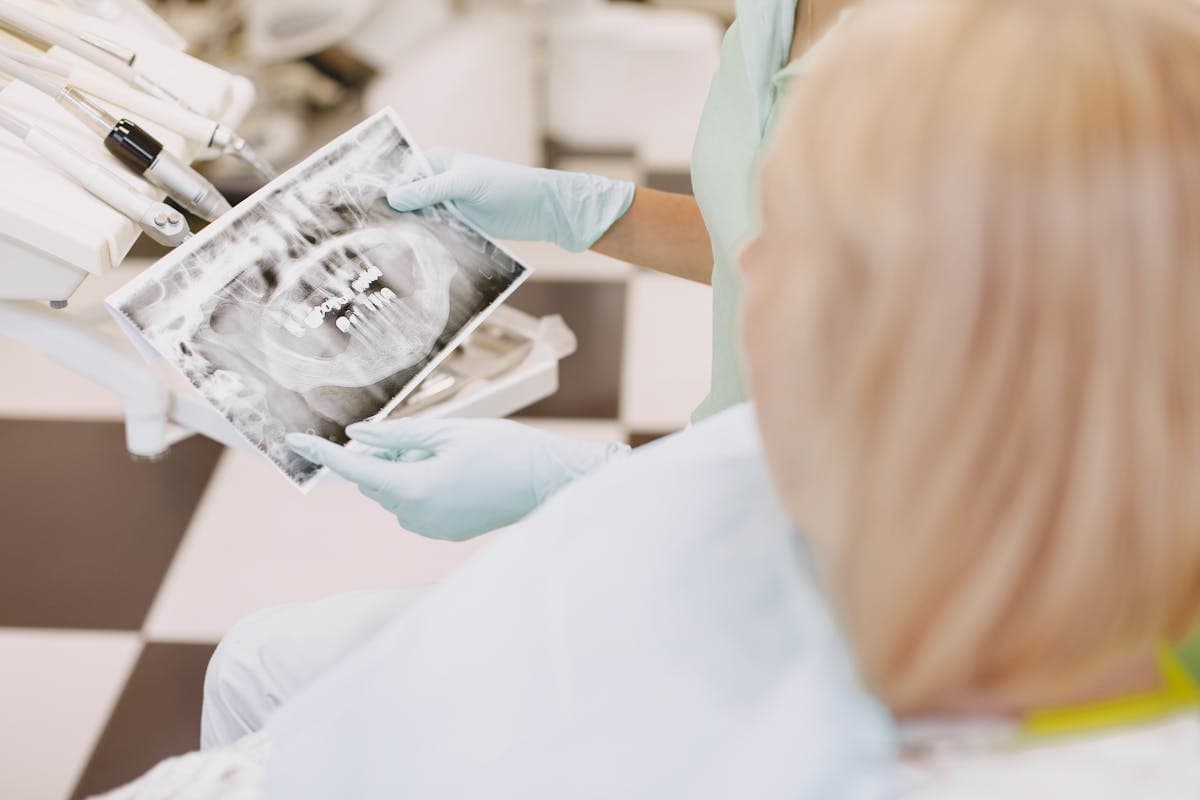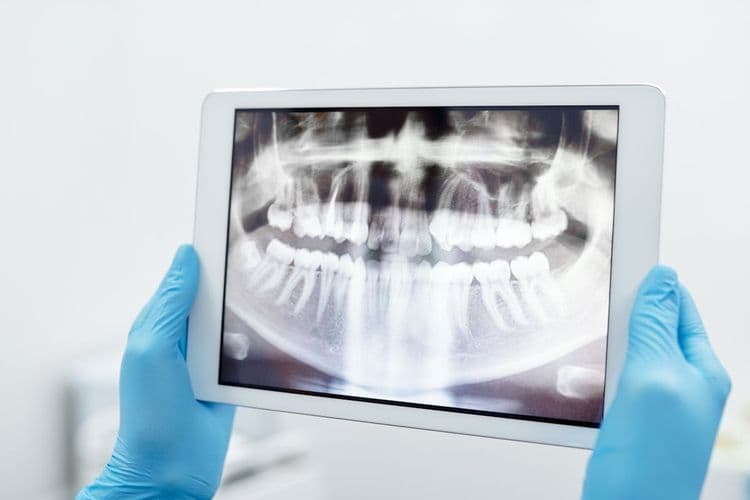The extensive process of an upper arch complete replacement, where all the upper teeth are surgically removed and replaced with dental implants supporting prosthetic teeth, is a significant medical advancement. This procedure, while being a potential solution for those with severe dental issues or total tooth loss, also brings a remarkable improvement in the patient’s quality of life by enhancing functionality and aesthetics. Although the procedure has seen increased success rates, it is essential to explore the eligibility criteria, preparation, procedure details, aftercare, and potential risks involved.
Understanding Upper Arch Replacement
Upper Arch Replacement, a pivotal and intricate dental procedure, requires a thorough understanding for both clinicians and patients alike. This detailed process involves replacing all upper teeth with dental implants, which serve as artificial roots providing stable support for the artificial teeth. Precision, in the hands of skilled clinicians, is paramount to guaranteeing a successful outcome. The patient experience is also a critical factor in the process. Patients undergoing this procedure may experience a range of emotions, including anxiety, excitement, and anticipation. It is the clinician’s responsibility to provide clear, detailed, and patient-centered communication to guarantee a positive patient experience. Understanding Upper Arch Replacement, consequently, inherently involves a synergy of technical proficiency, effective communication, and patient-centered care.
Reasons for Upper Arch Replacement
There are a myriad of reasons that may necessitate an Upper Arch Replacement. To begin with, aesthetic enhancement plays a significant role. Tooth loss, damage or misalignment can severely affect one’s appearance, self-esteem and quality of life. An Upper Arch Replacement can restore a natural-looking, attractive smile, boosting confidence and enhancing social interactions. Furthermore, functional improvement is a key reason. Missing or damaged teeth impair chewing efficiency, hinder proper speech and may lead to malnutrition or digestion issues. An Upper Arch Replacement can rectify these issues, restoring full oral function, facilitating proper nutrition intake, and improving overall health. Additionally, this procedure can prevent further oral health issues, such as shifting of the remaining teeth, jawbone deterioration, and facial sagging caused by tooth loss.
Assessing Your Eligibility
Are you a suitable candidate for an Upper Arch Replacement? The consultation process is the first step in establishing this. It involves a detailed evaluation of your dental condition and health history, which forms the basis for defining the eligibility criteria.
- Adequate Bone Density: You should have sufficient bone density in your jaw to support the replacement.
- Good Oral Health: No active gum disease or untreated tooth decay.
- Overall Health: No serious medical condition that could interfere with the success of the replacement.
- Commitment: Willingness to maintain good oral hygiene and regular dental appointments post-procedure.
Pre-Procedure Preparations
Before undergoing an upper arch complete replacement, meticulous preparations are necessary to guarantee a seamless procedure and ideal recovery. A thorough pre-operative checklist is essential for ensuring all necessary steps are taken. This includes several medical and physical evaluations to assess the patient’s overall health status. Patient education is another important aspect of pre-procedure preparations. It’s important to thoroughly inform the patient about the procedure, potential risks, and post-operative care. This can greatly reduce anxiety and improve patient cooperation. Additionally, lifestyle modifications such as cessation of smoking and alcohol are often recommended. Finally, arrangements should be made for post-operative care, including transportation and assistance at home, ensuring a smooth recovery process.
Detailed Procedure Breakdown
Initiating the upper arch complete replacement procedure, the surgeon first administers general anesthesia to guarantee the patient’s comfort. This step is essential as it alleviates patient anxiety and prepares them for the impending procedure.
The surgical techniques applied in this procedure can be broken down into four distinct phases:
- Extraction of the Existing Teeth: This is done with extreme precision to preserve the integrity of the gums and jawbone.
- Preparation of the Upper Arch: The surgeon carefully reshapes the upper jaw to accommodate the new prosthetic.
- Placement of Dental Implants: Titanium posts are surgically inserted into the jawbone, serving as roots for the replacement teeth.
- Attachment of the Prosthetic Arch: Once healed, the prosthetic is secured onto the implants, completing the replacement process.
These steps encapsulate patient experiences, thereby providing an extensive understanding of the procedure.

Post-Procedure Care Tips
Upon completing an upper arch replacement, thorough aftercare is a critical component to guarantee proper healing and prevent complications. Our focus now shifts to discussing the essential measures that should be taken following the procedure. We will also explore strategies to avoid any post-procedure complications, guaranteeing ideal recovery and long-term success of the replacement.
Essential Aftercare Measures
In the aftermath of an upper arch complete replacement, stringent aftercare measures are pivotal to secure a successful recovery and to prevent potential complications. Detailed aftercare instructions and maintenance routines form the backbone of this recovery process.
- Regular Cleaning: Implement a consistent oral hygiene routine, including brushing and flossing to keep the area clean and prevent infections.
- Follow-Up Appointments: Attend all scheduled check-ups so that the dentist can monitor your healing progress.
- Dietary Adjustments: Maintain a soft diet initially to avoid putting unnecessary pressure on the surgical site.
- Rest and Recuperation: Make sure you get an adequate amount of rest to facilitate healing.
Adherence to these measures guarantees a smooth recovery, maintaining the longevity of your upper arch replacement.
Avoiding Post-Procedure Complications
While the success of an upper arch replacement relies considerably on the surgical procedure, it’s equally important to address the potential for post-procedure complications. To mitigate risks, a thorough plan for pain management is critical. This typically involves prescribed analgesics and careful monitoring of the patient’s comfort levels. Additionally, dietary adjustments are essential in the early recovery phase. Soft, non-acidic foods should be consumed to avoid irritating the surgical site, gradually reintroducing harder foods as healing progresses. Patients should also maintain adequate hydration, which aids in the healing process. By adhering to these guidelines, complications such as infection, excessive bleeding, or prolonged discomfort can be avoided, ensuring a smooth and successful recovery.
Common Risks and Complications
Although the upper arch complete replacement procedure is known for its high success rate, it is essential to evaluate its potential risks and complications.
- Infection: Despite stringent infection control measures, there is always a risk of post-operative infection. Regular cleaning and antibacterial mouthwash can help mitigate this risk.
- Implant failure: This can occur due to various reasons including poor oral hygiene, smoking, or uncontrolled diabetes. Complication management is key in these scenarios.
- Nerve damage: This can lead to numbness, pain, or a tingling sensation in the natural teeth, gums, lips, or chin.
- Sinus problems: For implants in the upper jaw, there may be a risk of sinus-related complications if the implants protrude into the sinus cavities.
Understanding these risks can help prepare and manage expectations accordingly.
Success Stories and Testimonials
Ever wondered about the satisfaction level of patients who have undergone the upper arch complete replacement procedure? Numerous success stories and testimonials attest to the procedure’s effectiveness and the transformative journeys of those who have embraced it. These patient experiences, rich with details of restored function and improved aesthetics, provide invaluable insight into the real-world benefits of upper arch complete replacement. The overwhelmingly positive feedback reflects not only a high level of satisfaction with the procedure’s outcomes but also the enhanced quality of life that follows. From enjoying favorite foods without discomfort to flashing confident smiles, these testimonials bear witness to the life-changing impact of upper arch complete replacement, adding a personal dimension to its scientific and clinical merits.
Frequently Asked Questions
How Much Does a Complete Upper Arch Replacement Cost?
The cost of extensive replacement procedures varies widely, influenced by numerous cost factors such as materials, labor, and additional treatments. Financing options are often available to help manage these expenses.
Can I Eat Normal Food After an Upper Arch Replacement?
Post-procedure, certain eating guidelines should be followed to guarantee proper healing. Initially, soft foods are recommended to minimize discomfort. Gradual reintroduction of normal food is possible, but restrictions may apply based on individual recovery progress.
What Materials Are Used in the Upper Arch Replacement?
Various material types are utilized in replacement options, including acrylic, porcelain, and zirconia. The choice depends on factors like patient’s preference, durability needs, and budget, all contributing to a successful, personalized restorative procedure.
Is the Upper Arch Replacement Procedure Covered by Insurance?
The coverage for any medical procedure is dependent on individual insurance policies. Consequently, it’s imperative to confirm with your insurance provider whether dental benefits include specific treatments like this procedure in question.
How Long Is the Recovery Period After an Upper Arch Replacement?
The recovery period following this type of procedure varies, typically ranging between 6 to 8 weeks. The healing timeline is primarily dependent on individual factors and diligent adherence to post-surgery care instructions provided by your surgeon.


